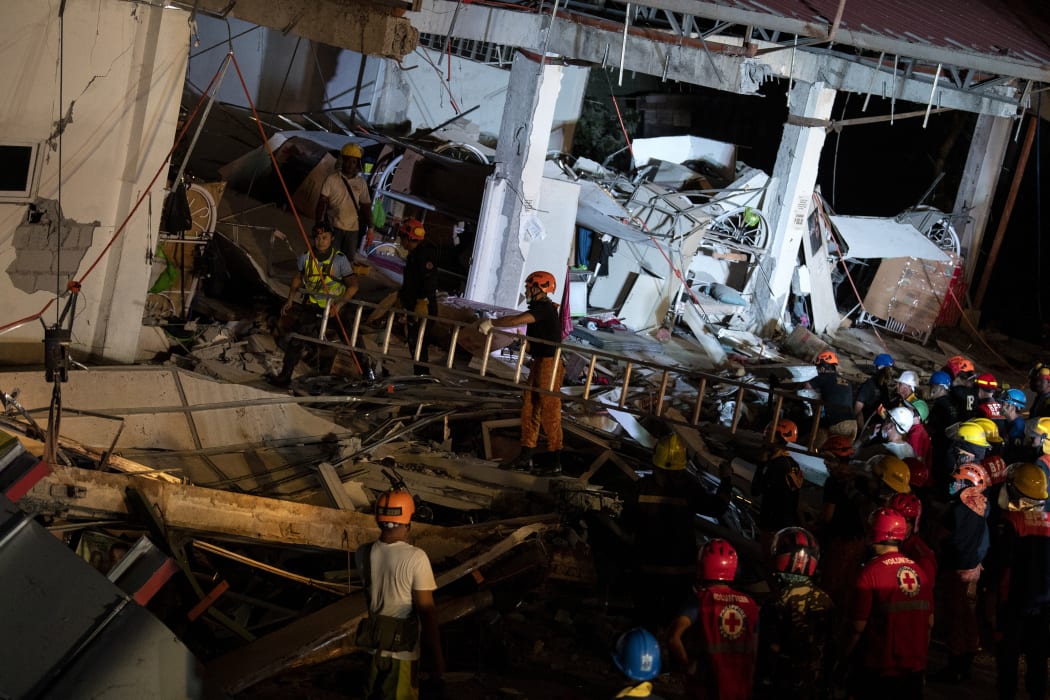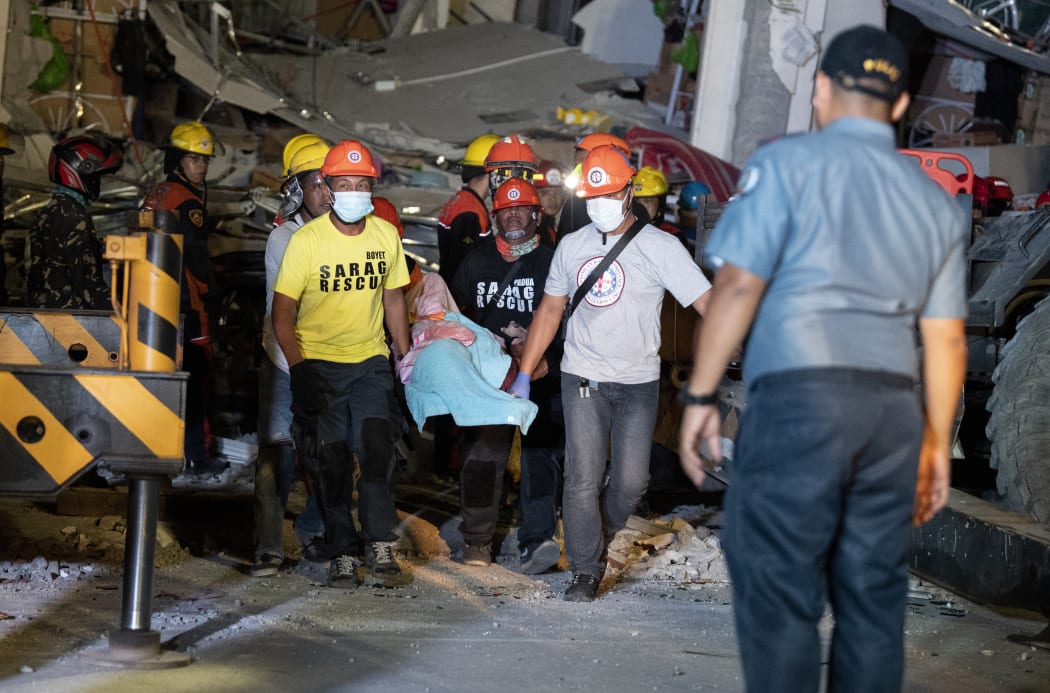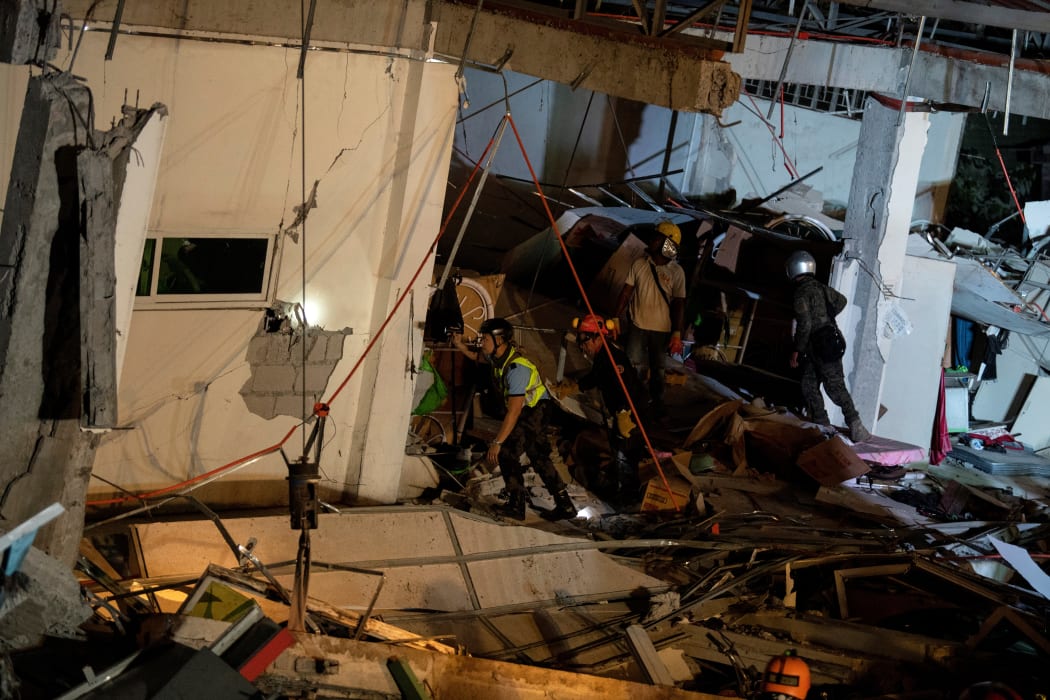At least eight people are dead after a 6.1 magnitude earthquake on the Philippines' main island of Luzon, with officials fearing dozens could be trapped in the rubble of a collapsed commercial building.

Photo: Noel CELIS / AFP
The quake hit 60km northwest of the capital Manila shortly after 5pm local time, disrupting air, rail and road transport and causing some damage to buildings and infrastructure.
The province of Pampanga was worst hit. Eight people were killed and about 20 injured, provincial governor Lilia Pineda said by telephone, citing information from disaster officials.
Rescuers were using heavy duty equipment and search dogs to try to reach people trapped after a four-storey building went down, crushing the ground-floor supermarket, she said.
"They can be heard crying in pain," she said of those trapped. "It won't be easy to rescue them."
The quake was initially reported as being of 6.3 magnitude and later revised down to 6.1 magnitude, the US Geological Survey and Philippines seismology authorities said.

Photo: Noel CELIS / AFP
The Philippines is prone to natural disasters, located on the seismically active Pacific "Ring of Fire", a horse-shoe shaped band of volcanoes and fault lines that circles the edges of the Pacific Ocean. It is also hit by an average 20 typhoons a year, bringing heavy rains that trigger deadly landslides.
Pampanga's international airport at Clark, a former U.S. military base, was closed and scores of flights were cancelled after damage to parts of the facility including check-in areas.
Large cracks appeared on provincial roads and electricity poles were felled.
Rescue teams in Manila were preparing to reinforce efforts to reach people trapped in Pampanga. The government urged people to be calm as rumours of greater death and destruction gained traction online.

Rescue workers search for survivors in a collapsed Chuzon Super Market in Porac, Pampanga. Photo: Noel CELIS / AFP
"We urge them to refrain from spreading disinformation in social media that may cause undue alarm, panic and stress," said presidential spokesman, Salvador Panelo.
The quake caused tall buildings in the city to sway for several minutes in the main business districts.
"We got nervous, we got dizzy. I ran downstairs with three kids," said Arlene Puno, a domestic helper in a high-rise apartment in the Makati financial centre.
Elevated rail services were halted and workers were evacuated from offices and condominiums, sending a flood of people onto sidewalks and into bus queues and adding more chaos to roads that are among the world's most congested.
The quake was initially reported as being of 6.3 magnitude and later revised down to 6.1 magnitude, the U.S. Geological Survey and Philippines seismology authorities said.
Mark Genesis Samodio, 23, a maintenance worker at a Makati condominium in the capital, said the quake's impact was unusual, even for a city that has grown used to them.
"I was sitting down then it shook so strong I thought I was being rocked in a cradle," he said.
- Reuters

